From former Wild West gold mining towns to the first settlements in colonial America, there are numerous small towns scattered across the U.S. that haven’t changed all that much over the years. According to the National Park Service, there are more than 2,300 historic districts in the nation today, with homes, buildings, and other special landmarks that have been carefully preserved despite the passage of time. For your next vacation, consider exploring one of these historic U.S. small towns that will make you feel as though you’ve stepped back in time.
Bisbee, Arizona
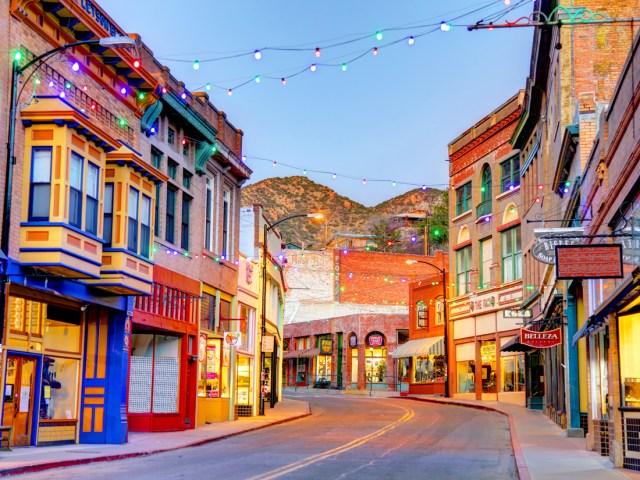
The quirky canyon town of Bisbee in southeastern Arizona sits at an elevation of 5,538 feet — making it America’s southernmost “mile-high” city. After copper was discovered in a nearby mine in 1877, Bisbee was incorporated in 1880 and became one of the largest cities in what was then the Arizona territory. By 1900, Bisbee had a population of more than 20,000, but after the mine closed in 1974, the number of residents began to dwindle.
Today, the former saloons and inns remain relics of the town’s mining past, and locals are careful to preserve them, as well as their tight-knit community of artists and others who prefer the quiet desert scenery of the Mule Mountains. But with a lively downtown of dive bars, galleries, gift shops selling copper-themed trinkets, museums, and Wild West-themed restaurants, Bisbee also offers plenty of appeal as a weekend getaway for history buffs.
Ferndale, California
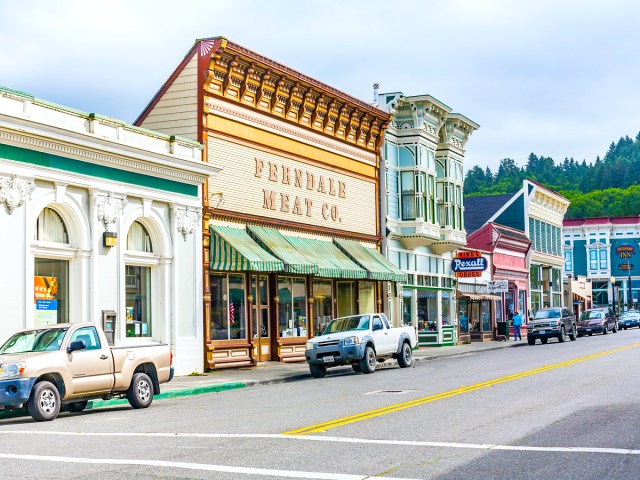
The Northern Californian town of Ferndale hasn’t changed much since it was founded in 1852 by Danish dairy farmers, earning it the nickname “Cream City.” The elaborate Victorian shops and dwellings that mark Main Street have been protected to maintain the town’s charming character, giving visitors a glimpse of what life was like here in the late 19th century.
Home to historic inns, gift shops, bakeries, fine art galleries, coffee shops, local markets, the Ferndale Museum, and other old-timey businesses, Ferndale is not only a picturesque getaway itself, but also an ideal hub for exploring nearby trails through the towering trees of Redwood National and State Park, the Lost Coast, and other attractions in the remote wilderness of Humboldt County.
Jim Thorpe, Pennsylvania
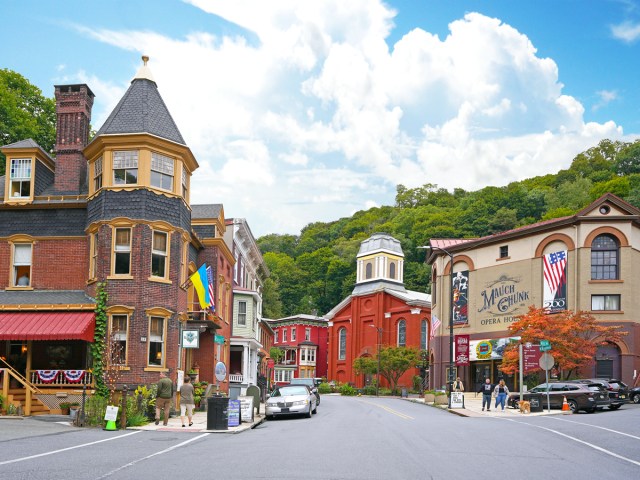
Nestled in Lehigh Gorge in rural Pennsylvania, the small community of Jim Thorpe is a popular stomping ground come autumn, when tourists flock to see the fall foliage of the Poconos. Many choose to admire the scenery aboard one of the historic open-air or glass observation dome trains that chug through Lehigh Gorge State Park along the Lehigh Gorge Scenic Railway. Founded in 1818 by the Lehigh Coal and Navigation Company, a pivotal player in the American Industrial Revolution, the town was originally called Mauch Chunk and still contains the elegant Victorian mansions once owned by some of the nation’s first millionaires.
In 1954, the town was renamed after legendary American track-and-field Olympian Jim Thorpe, whose memorial is located here along Route 903. Elsewhere, visitors will find quaint bed-and-breakfasts, art galleries, and mom-and-pop shops that go all out for the holidays. Other buildings, such as the Old Jail, are living museums so that visitors can witness their original purpose. Don’t miss checking out the Harry Packer Museum, which inspired Walt Disney World’s Haunted Mansion ride.
Chagrin Falls, Ohio
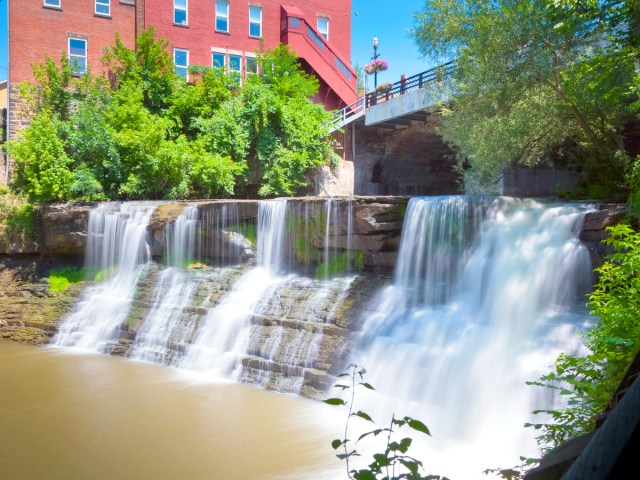
Incorporated as a village in 1844, Chagrin Falls is an idyllic Midwestern town. Though it sits just 20 miles east of Cleveland, it looks like it belongs in the film Back to the Future instead. The town’s red, white, and blue popcorn shop has been operating since 1949 and still sells its famous Chagrin-style kernels (kettle corn mixed with cheddar cheese).
On Main Street, visitors can peruse storybook shops selling local art and antiques, and admire historic properties near the town’s namesake waterfall. In late May, the town hosts the annual Blossom Time festival, an event with carnival games, a Ferris wheel, and other attractions that might make you feel as though you’re in a Rockwell painting of the American dream.
Terlingua, Texas
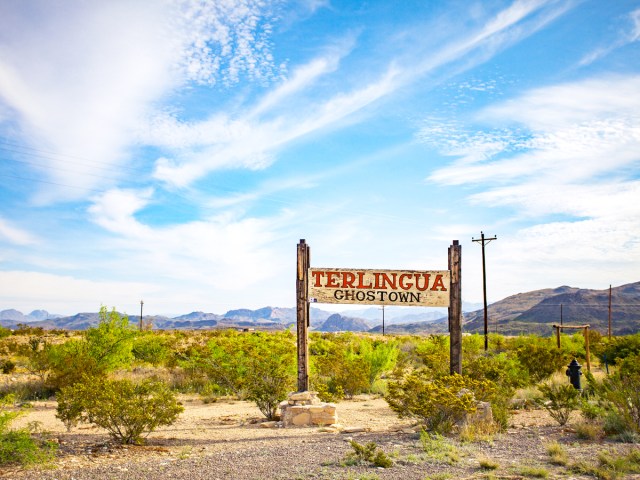
Those who take the long drive to Big Bend National Park in West Texas shouldn’t miss Terlingua. This former mining town was founded by the Chisos Mining Company in 1903 after the discovery of cinnabar, an ore that contains mercury. Now a ghost town, the remote village is home to just a few restaurants, galleries, gift shops, and bars — but that doesn’t deter visitors eager to get a glimpse into the region’s early 20th-century past.
Indulge on tacos and an ice-cold beer at a picnic table overlooking the Santa Fe de Los Pinos mountain range, located on the U.S.-Mexico border, before checking out the spooky final resting place of cowboys and miners at Terlingua Cemetery, the historic Starlight Theatre, and the weathered St. Agnes Church.
Plymouth, Massachusetts
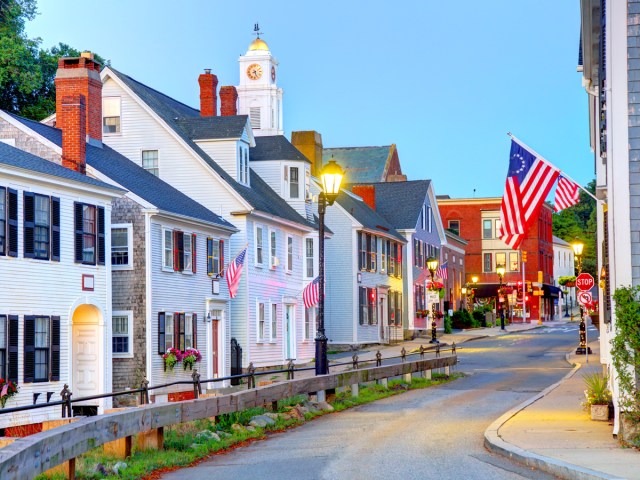
There’s perhaps no better place to take in America’s colonial past than Plymouth, Massachusetts, where the Mayflower first docked 400 years ago. Today, the quaint New England town is home to cranberry farms, the famous Plymouth Rock, historic mills, colonial homesteads, and other well-preserved nods to the nation’s past. See the oldest dwellings in New England at Plimoth Patuxet, which includes the Patuxet Homesite, where early Indigenous peoples lived off the land for more than 12,000 years; a 17th-century English village; and the Mayflower II, a floating replica of the original ship.
More from our network
Daily Passport is part of Inbox Studio, which publishes content that uplifts, informs, and inspires.
















